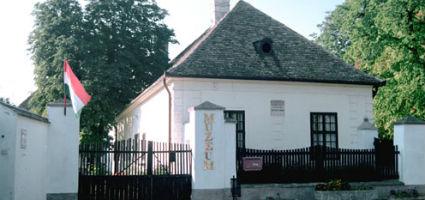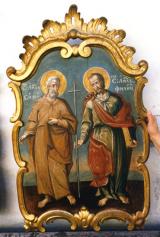2024. April 25. Thursday
Kisfaludy Memorial House - Sümeg
 |
Address: 8330, Sümeg Kisfaludy tér 2.
Phone number: (70) 466-4036
E-mail: kisfaludyemlekhaz@gmail.com
Opening hours: 01.05-30.09.: Tue-Sun 10-18
01.10-30.04.: Mon-Fri 8-16 |
Sándor Kisfaludy and his wife settled in the house for good in 1800, following the Napoleonic wars. Since they had no descendants, their relatives sold the house to the bishopric of Veszprém. However, in 1944 the house was nationalised. Since 1950 a Kisfaludy Memorial House, since 1990 the Towmn Museum have been functioning here.

